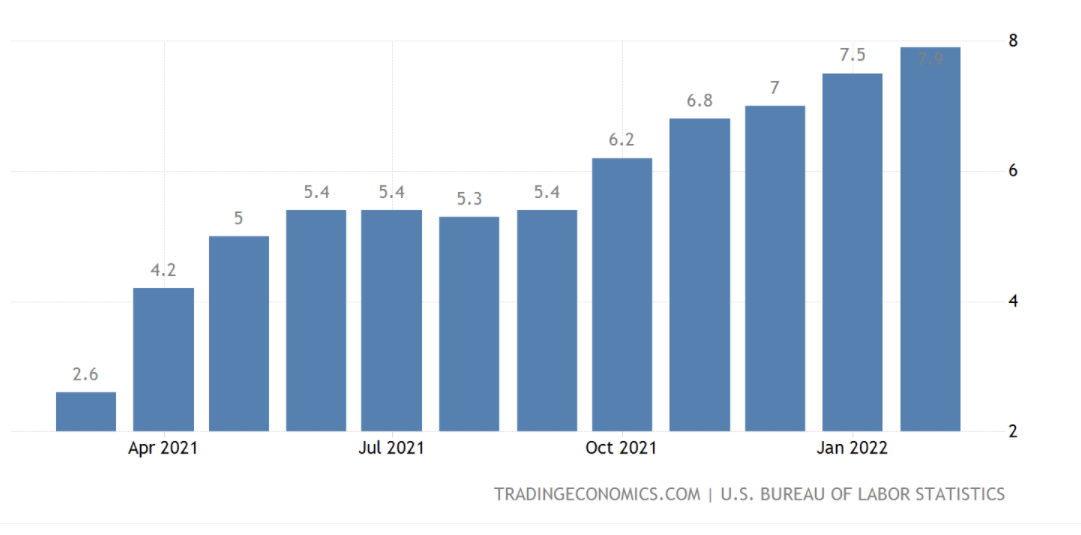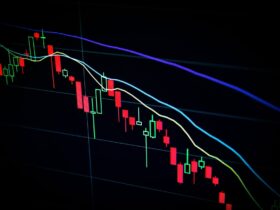Investing is certainly not easy, and you should be worried when you start to think it is easy. Now, as we approach the beginning of April 2022, many investors are looking ahead to what the coming months might bring. After diving into the two types of stock market crashes: “bad certainty” and “uncertainty”, I wanted to take a closer look at the impact of inflation in the stock market and share a popular method I called as the “Risk-Reward Ratio” to help in making the right decision with my portfolio.
Note: The goal of this article is not about explaining the definition of inflation. Please visit Investopedia for that understanding.
First, let’s understand why you should care about inflation?
Inflation is often thought of as bad, but it’s not always negative. In fact, in small doses, inflation can actually be helpful to the stock market. It’s only when inflation gets out of control that it can have a negative impact on stocks.
This is because high inflation levels can lead to higher interest rates, which can choke off economic growth. This can cause stock prices to fall as investors worry about the future.
The problem

What does this mean?
As inflation continues to hover around the 8% mark, the Federal Reserve has decided to hike interest rates as a way to curb its growth. This policy is intended to help stabilize prices and prevent the economy from overheating.
Higher interest rates make it more expensive for businesses and consumers to borrow money, slowing down economic growth. They can also cause stock prices to fall as investors become worried about the future.
Inflation can impact stock market investors in four main ways:
- Inflation drives up the cost of doing business
- Inflation reduces the purchasing power
- Companies may be able to pass along higher costs to consumers
- The Federal Reserve responds to inflation (the main problem)
Generally speaking, inflation tends to be bad for stocks during the early stages of a business cycle, when the Federal Reserve is actively raising interest rates to keep prices from rising too far, too fast.
That explains why value stocks tend to perform better in periods of high inflation, while growth stocks do better when inflation is low. This is because value stocks typically have lower price-to-earnings ratios, so they are less sensitive to price changes. On the other hand, growth stocks tend to have higher P/E ratios and are more susceptible to price changes.
As a result, Nasdaq Technology Stock and S&P 500 Wonder Rallies keep getting shorter.
The Twitter post below shows how the Nasdaq Technology Stock and S&P 500 Wonder Rallies keep getting shorter.
The Risk-Reward of Investing Today
You can’t play the game without knowing the rules. At least, not very well. And that’s true whether you’re talking about a board game like Monopoly, a sport like football, or investing.
One of the most essential rules in investing is understanding the risk-reward.
But here’s the thing: Most investors don’t fully understand this rule. In fact, many have never even heard of it. They may be familiar with risk and reward individually but fail to see how they’re connected (connecting the dots).
In other words, the key is to understand what could happen and figure out if you’re comfortable with those potential outcomes.
Measuring the Risk-Reward in the uncertain settings
To measure the risk-reward, we need to look at both sides of the potential rewards and the risks.
The potential upside — Reward
- War is over, becoming “bad certainty.”
The potential downside — Risk
- War continues, becoming “uncertainty.”
- Worsening inflation
- Global crude oil price
- Fed tightening
- Increase in commodity price
- Supply Chain issues
1 potential upside reward versus 6 potential downside risks. The Risk-Reward indicates that I should hold off on investing until there’s a shift in the Risk-Reward.
Piecing the puzzle together
The Risk-Reward Ratio is one of the most important strategies to consider when investing. With the market’s current status, it is clear that the reward does not outweigh the risk factor as of yet. The inception of inflation will be interesting to watch and, if implemented correctly, will change the entire method that investors approach this market. For now, it might be best to sit on the sidelines and wait for a better opportunity.
But as they say, risk comes with reward. And without risk, there would be no reward. So while it might be best to wait for now, at some point, you’ll have to take the plunge if you want to see any rewards. After all, that’s what investing is all about.
Disclaimer: I’m not a financial advisor and cannot legally provide financial advice. I have done this study purely out of personal interest in the financial world. Any risk you take in investing money should be taken as just that, a risk. Please do your own research and consult with qualified professional points of view before investing your hard-earned money.















Leave a Reply
View Comments